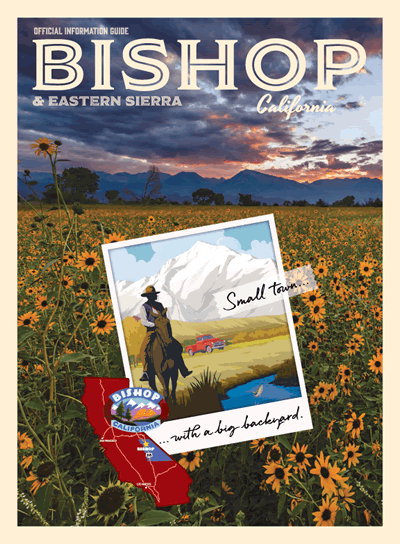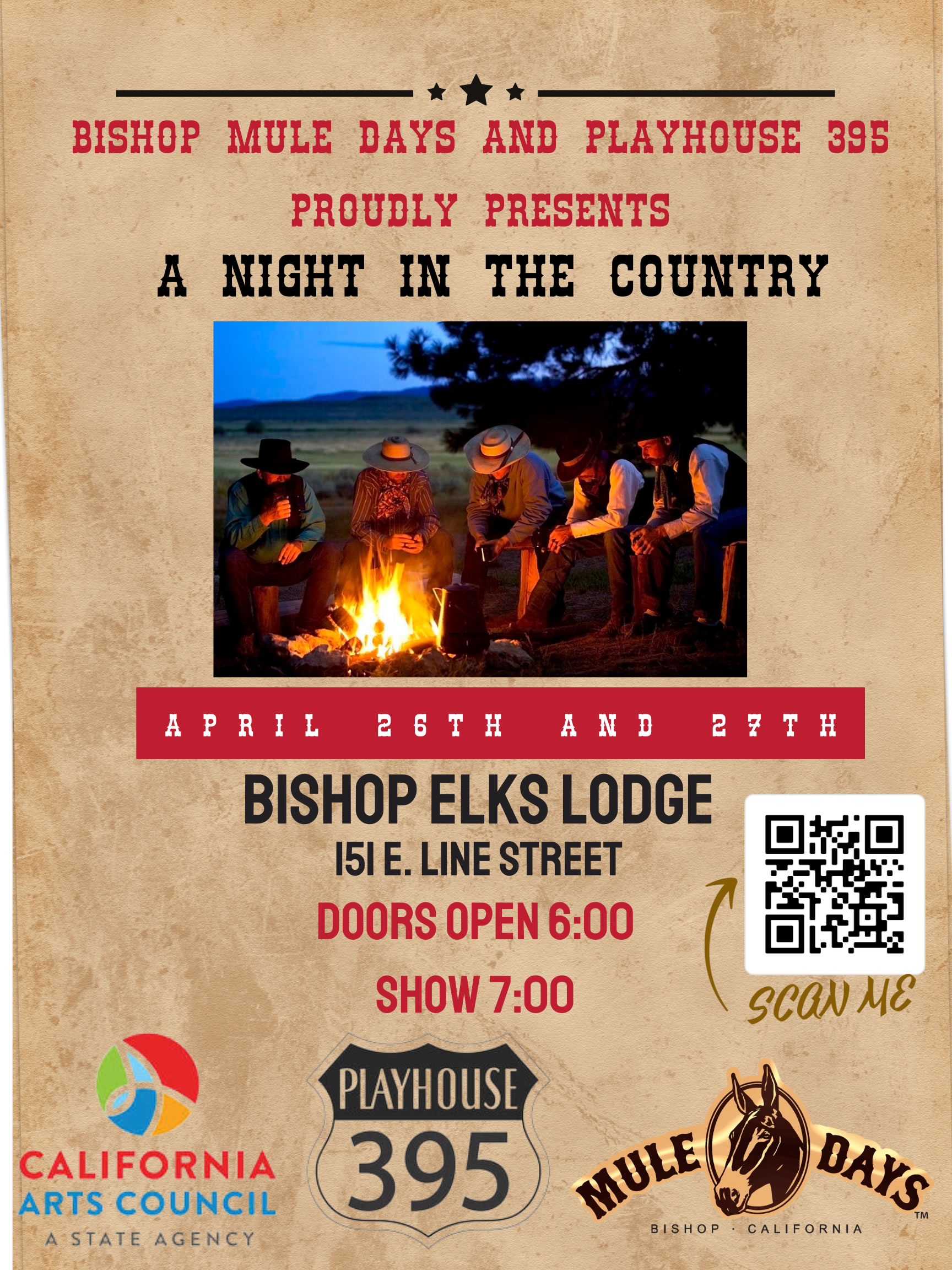Written by Tom Stienstra
From a perch above a boulder-strewn ravine, we peered with binoculars up canyon walls and across a steep jumble of rocks and dirt for endangered Sierra Nevada bighorn sheep.
The arrival of spring in the high country is when Sierra bighorns feast on fresh, water-saturated forage in the front country of the Eastern Sierra Nevada outside Bishop.
A warm, dry breeze pushed out of the north. The scent of sage was in the air. At the mouth of Sawmill Canyon, on a steep mountain face below a towering monolith, we found pockets of greenery amid the rocks. We scanned sections, segment-by-segment, for the silhouette of a Sierra bighorn, attracted there to feed.
“We know they’re in there,” he said.
Sierra bighorns, he noted, can seem nearly invisible. Their ability to blend against the rock is a defense against predators. When you finally see one, others nearby can suddenly appear as if out of nowhere.
To some, the spike in population also seems to have come out of nowhere. In the late 1990s, about 100 Sierra bighorns were thought to be left on the planet; the latest count was roughly 600. This spring’s count is expected to be lower, Stephenson said, “as a result of heavy snow and mountain lion predation.” But Stephenson said the Sierra bighorn population could sustain its long-term expansion in the next few years and could be relisted from endangered to threatened.
Landmark breakthroughs could help assure that:
Domestic sheep threat: In March, the Mono County Board of Supervisors voted 3-1 to reject a grazing lease for domestic sheep near the range of the Sierra bighorn. That is critical because domestic sheep remain the biggest long-term obstacle to recovery, Stephenson said. In the 1850s, when early pioneers arrived to California, thousands of Sierra bighorns roamed the high country, Stephenson said. The pioneers brought herds of domestic sheep, which infected the bighorns with disease, killing them.
Mountain lion threat: For several years, the Mountain Lion Foundation has softened its stance toward the DFW killing lions in favor of protecting endangered Sierra bighorns. Without pushback, the DFW has identified and killed 24 lions that were specifically targeting bighorns in threatened herds. “When there were thousands of Sierra bighorns, the size of the herd could handle occasional predation,” Stephenson said. “When you have a few hundred animals of a species left in the world, every individual becomes important.”
End of a severe winter: In the desolation of the Eastern Sierra, the arrival of spring means more water-filled plants are available, which can lead to better health of ewes and higher survival rates of lambs. “We believe we have turned the tide for the recovery of Sierra Nevada bighorn sheep,” said Ginnie Chadwick, a scientist who volunteers with the Sierra Nevada Bighorn Sheep Foundation.
The best place to find and see Sierra bighorn is out of the town of Bishop, about an hour south of Mono Lake. From San Francisco, Sacramento or anywhere else west of the Sierra, it can be a mind-bending drive.
The range of the Sierra bighorn includes some of the most foreboding, steep and desolate high country in America.
Over the years, I’ve spotted and stalked Sierra bighorn in several areas. In the Eastern Sierra, I’ve had the best luck up Pine Creek Canyon, the canyons just above the floor of Round Valley, Sawmill Canyon and Taboose Canyon. Another good spot, east of Bishop, is up Silver Creek Canyon on the flank of White Mountain, for a subspecies, the desert — or Nelson — bighorn. For that trip, which includes a creek crossing, a four-wheel drive vehicle with high clearance is required.
A new herd was transplanted in 2015 in the Cathedral Range of Yosemite National Park. It takes a combination of backpacking, trekking and rock climbing to get close. Jen Joynt of Berkeley, who won the DFW’s first-place award for best wildlife photo of the year in 2016, said she made the attempt last fall, but was unable to get a photo.

Photo: JOHN D WEHAUSEN / Associated Press
This is an undated photo of bighorn sheep in the Sierra Nevada mountains near Mt. Baxter, Calif. The animals are on the brink of being eliminated from the Sierra.
The best strategy is to go now, as spring arrives in the high country, where vegetation is sprouting in mountain crevices and bushes and small trees are budding and inching out new growth. Sierra bighorn guru John Wehausen, who like Stephenson and Chadwick has a doctoral degree, told me that he measured the physical advancement of spring and that it moves up 60 feet per day in elevation in the Eastern Sierra.
When you arrive, head to the foot of the canyons, find a perch and scan the slopes of the canyons with binoculars. Start by searching for vegetation, even if it appears to be sparse ground-level browse. Do not sweep back and forth at random. Instead pick a small section (as pilots learn when they scan for other aircraft) and home in on that section for your search. When confident there are no Sierra bighorn in that section, move to the next.
On our trip, Liz Siemion, a DFW scientific aide, located a Sierra bighorn sheep on the mountain slope above the far side of Sawmill Creek Ravine, near the opening of Sawmill Canyon.
“You see that one bright, flat rock, about the size of a car, facing us?” she asked. “There’s one just to the right of it, nibbling on a bush.”
We zeroed in. At first, it looked like a big bunch of nothing. Then there was subtle movement and, as if emerging out of the rock, we saw the outline of a Sierra bighorn that was camouflaged against the gray rock.
For a closer look, I switched to a spotting scope, and zoomed in. In the confined field of view, another bighorn suddenly appeared — and then another. In minutes, we went from staring at rocks to verified sightings of 10 Sierra Nevada bighorn sheep. In time, the scientists counted 21. The ambitious few can draw within 300 yards, stalk from behind rocks, and free-climb to parallel vantage points for photos. It takes a 300mm to 500mm lens for a photo, said Joynt, and rock-climbing skills to get there.
Most people have never seen a Sierra bighorn, Stephenson said, and the animal’s status and location makes this a world-class wildlife adventure. There was even a time 25 years ago when it was suggested that the last Sierra bighorns be captured and put in zoo-like captive breeding facilities to keep the species alive.
Out in the High Sierra, many of this year’s lambs will be born this month. With increased vegetation from the arrival of spring, there is hope for higher survival rates.
One of the greatest wildlife recovery stories in California history is now at hand.
Tom Stienstra is the outdoors writer for The Chronicle. His outdoor report can be heard at 7:35 a.m., 9:35 a.m. and 12:35 p.m. Saturdays on KCBS (740 and 106.9). Email: Twitter: @StienstraTom
If you want to go
What: Sierra Nevada bighorn sheep
Status: Listed as endangered with roughly 600 remaining in the world. Could be relisted to threatened if present population expansion trends are sustained.
Eastern Sierra, west of Highway 395: Pine Creek Canyon, canyons just above the floor of Round Valley, Sawmill Canyon, Taboose Canyon, for Sierra bighorns.
White Mountains, east of Highway 395: Silver Creek Canyon (four-wheel drive, creek crossing required), for desert bighorns.
Sierra bighorn info: Sierra Nevada Bighorn Sheep Foundation, http://sierrabighorn.org; Department of Fish and Wildlife’s Bighorn Sheep page.
Lodging, supplies: Bishop, Inyo County; Bishop Chamber of Commerce
Distances to Bishop: 40 miles from Mammoth Lakes, 64 miles from Lee Vining/Mono Lake (east of Yosemite/Tioga Pass entrance when open in summer), 171 miles from Carson City, 279 miles from Sacramento, 345 miles from Concord, 364 miles from San Francisco.













